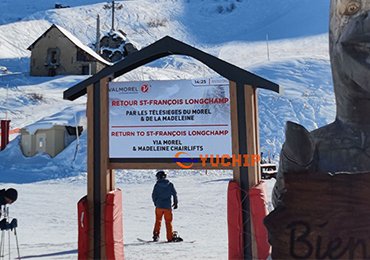Outdoor LED Screen
An outdoor LED screen is a bright digital display made for outdoor use. It shows clear and vivid content, even in direct sunlight. These screens are built to handle extreme weather and are reliable in all conditions. YUCHIP offer various viewing distances with pixel pitches from P2.97 to P10. They are perfect for advertising, sports stadiums, and public events where powerful visuals are needed.
Outdoor LED Screen Product Categories
Why Choose YUCHIP Outdoor LED Screen
Various Installation Methods to Meet Your Needs
Our outdoor LED screens can be installed in many ways to fit different needs. Options include column type, wall mounting, roof installation, or bracket mounting. This flexibility allows it to be used as a perimeter LED screen for stadiums, on building walls, or as rooftop signage, making it suitable for various applications.


Easy Installation and Maintenance
Enjoy a hassle-free setup with our outdoor LED displays. They feature a fast-lock system and ultra-lightweight construction. Our Eco Pro series and Eco series support both front and rear maintenance, allowing you to make quick adjustments or repairs, saving time and reducing operational downtime.
Built for Extreme Weather Conditions
YUCHIP’s waterproof outdoor video panels are made to perform reliably in all climates. Whether under the intense heat of Saudi Arabia’s deserts or the cold of Iceland’s snowy landscapes, these screens stay reliable. With a working temperature range from -30℃ to +70℃, effective heat dissipation, and superior waterproof protection, they are built to handle rain, humidity, direct sunlight, and freezing conditions, ensuring steady performance in any weather.


Enhanced Visual Impact
Our outdoor LED display screens are optimized for maximum brightness, reaching up to 7500 nits, and feature a high refresh rate of 3840Hz. This ensures clear, vibrant visuals even in bright sunlight. Perfect for outdoor digital signage and advertising, they capture attention and make your messages stand out anywhere.
Eco-Friendly and Energy-Efficient
With YUCHIP, you get a greener solution that helps reduce energy costs. Our outdoor digital signage is up to 30% more energy-efficient than regular LED screens. It can lower power consumption while maintaining top brightness and performance. It’s a perfect choice for eco-conscious businesses looking to minimize their environmental impact without sacrificing visual quality.


Customizable for Any Installation
Every project is unique, and our LED screens reflect that. Choose from various customizable options, including flat LED screens, 90-degree seamless splicing displays, curved LED panels, and perimeter LED display boards. Whatever your vision, we provide various solutions that perfectly fit your space and purpose.
Outdoor LED Screen Series Videos
How We Ensure Outdoor LED Screen Quality
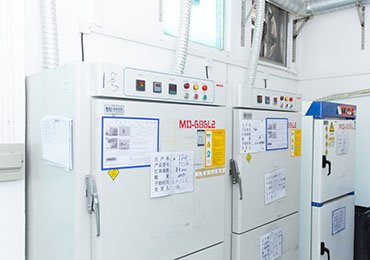
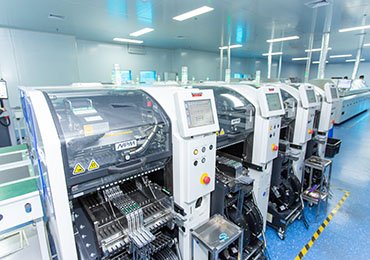
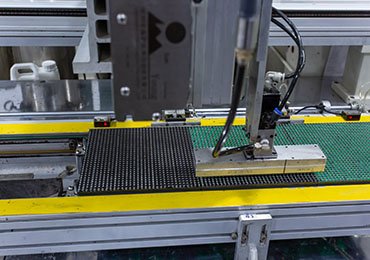



Latest Outdoor LED Screen Customer Cases
Outdoor LED Screen Buyer’s Guide (2025): What You Must Know Before You Buy
Introduction
Outdoor LED screens have become the go-to solution for powerful visual communication in cities, transportation hubs, shopping districts, stadiums, and public events. Whether you’re a city planner in Europe, a business owner in the Middle East, or a media operator in North America, choosing the right outdoor LED display requires more than just comparing specs. In this in-depth guide, we cover the real-world considerations for selecting, installing, and maintaining an outdoor LED screen, including environmental challenges, maintenance methods, installation types, and more.
What Is an Outdoor LED Screen?
An outdoor LED screen, also called an LED video wall outdoor, is a large-format digital display that uses light-emitting diodes (LEDs) to deliver bright, high-contrast visuals visible even under direct sunlight. Outdoor LED displays are commonly mounted on poles, building walls, or rooftops and must withstand sun, wind, rain, and fluctuating temperatures.
5 Reason That Why Choose an Outdoor LED Display
1.Superior Visibility Day and Night
Outdoor LED screens offer high brightness levels—often 5000 to 10,000 nits or more—ensuring perfect visibility even in direct sunlight. With auto-brightness adjustment, they also perform well at night without being glaring.
2.Weatherproof Design
An outdoor LED display is built with IP65 or higher-rated waterproof and dustproof components, allowing it to withstand rain, humidity, wind, and extreme temperatures.
3.Dynamic Content Display
LED technology supports images, videos, animations, and live feeds, which makes outdoor screens an ideal medium for engaging content, advertising, and real-time communication.
4.Long Lifespan and Durability
High-quality LED screens offer a lifespan of 100,000 hours or more, delivering reliable performance for years with minimal maintenance.
5.Remote Control and Scheduling
Most modern outdoor LED displays can be managed remotely through cloud-based software. You can update content in real time and schedule campaigns for different times of day.
What Is The Common Applications of Outdoor LED Displays?
- Advertising Billboards: Eye-catching LED billboards for brands along highways, rooftops, or in shopping districts.
- Sports Stadiums: Perimeter screens, scoreboards, and replay displays for fans.
- Digital signage outdoor: Government or municipal messages, traffic alerts, weather updates.
- Transportation Hubs: Digital signage at airports, train stations, or bus terminals.
- Retail Stores: Storefront promotions and digital window displays.
Installation Methods for Outdoor LED Screens
1.Wall-Mounted Installation
Ideal for buildings or storefronts, this method requires careful planning of wall load capacity and wiring. Usually front-access modules are needed for maintenance.
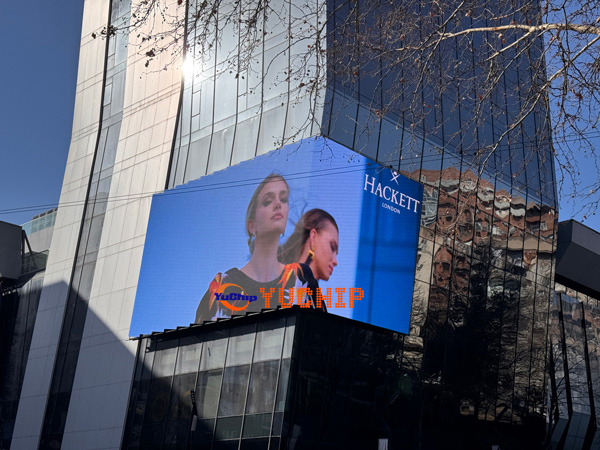
2.Steel Pole or Pylon Installation
Widely used for roadside LED billboards. Since there is space behind the screen, rear maintenance design is acceptable and often more cost-efficient.
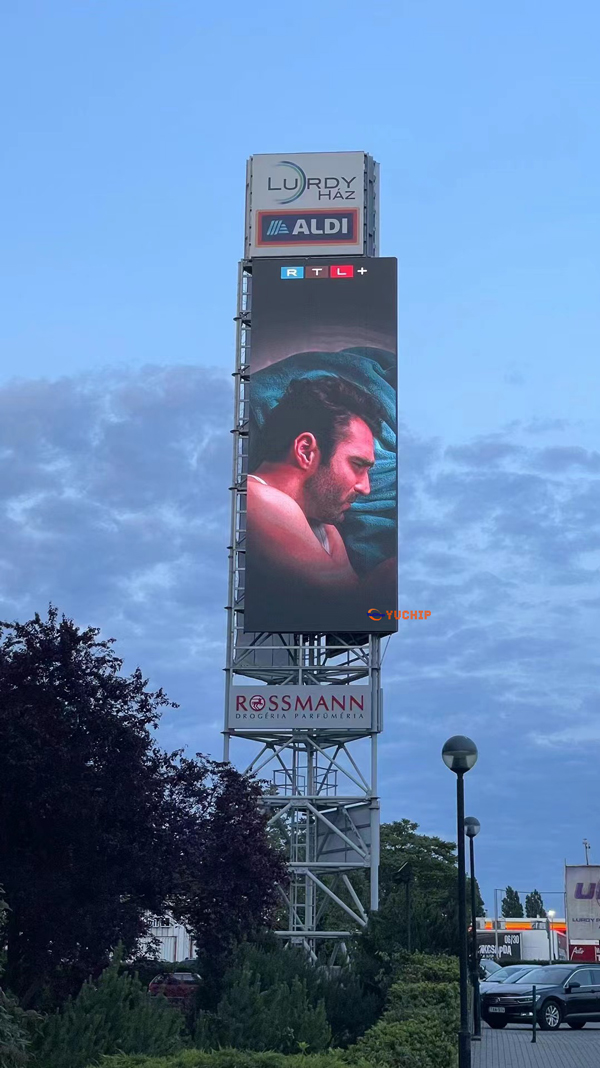
3.Roof-Mounted Installation
Common in city centers. These installations demand lightweight cabinets and wind-resistance structure analysis.
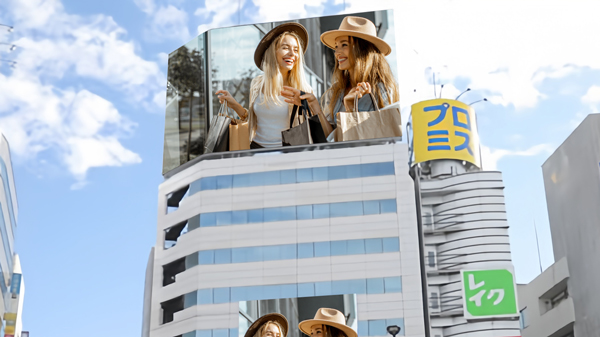
4.Custom-Shaped or 3D Structures
With the rise of 3D LED billboard popularity, many fixed installations now include curved, L-shape, or cylindrical structures. This requires custom modules and specialized brackets.
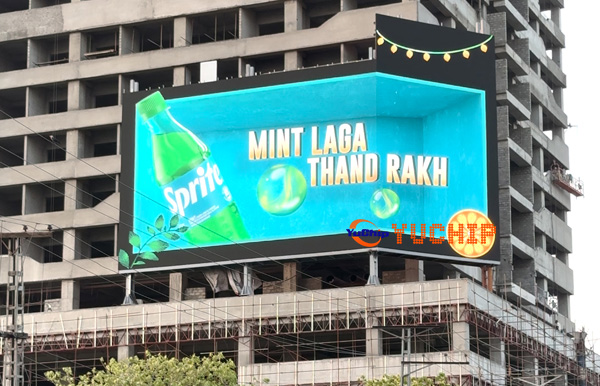
YUCHIP Tip: For wall or tight-space installations, our Eco Pro Series offers ultra-thin 83mm cabinets with front maintenance.
What Are The Key Considerations When Choosing an Outdoor LED Screen?
1.Pixel Pitch and Viewing Distance
Pixel pitch refers to the distance between two adjacent LED pixels, measured in millimeters (e.g., P4, P6, P10). The smaller the pixel pitch, the higher the resolution. However, higher resolution is only necessary when viewers are close. For roadside billboards or rooftop signs viewed from a distance, a P6 to P10 pixel pitch is often sufficient.
Recommended viewing distance per pixel pitch:
- P4: 4 meters or more
- P6: 6 meters or more
- P10: 10 meters or more
2.Brightness Levels and Environment
If your screen faces direct sunlight or is located in regions with high ambient light, ensure the LED screen supports at least 6000 nits brightness. In cloudy or shaded urban areas, 5000 nits may be sufficient.
3.Climate-Specific Adaptation
a. Hot and Arid Regions (e.g., Middle East)
- Choose LED cabinets with high heat dissipation.
- Use die-casting aluminum or magnesium alloy cabinets instead of iron to avoid overheating.
- Opt for fanless or air-conditioner-free designs to reduce maintenance and operating costs.

b. Cold Climates (e.g., Russia, Canada)
- Ensure the screen supports low-temperature startup (-30°C or below).
- Use heaters or thermal insulation in power supply and control boxes.
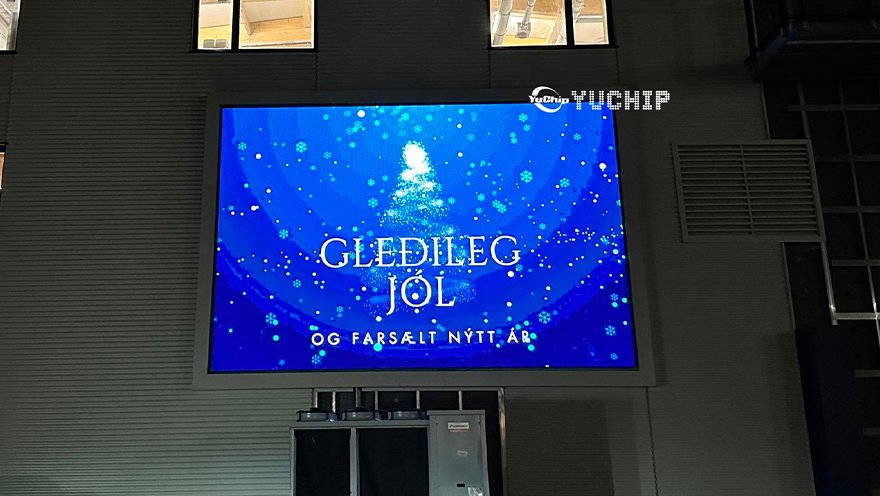
c. Coastal and High-Humidity Regions (e.g., Southeast Asia)
- Require anti-corrosion cabinet materials (die-casting aluminum, stainless steel).
- Use fully sealed LED modules with conformal coating for salt resistance.
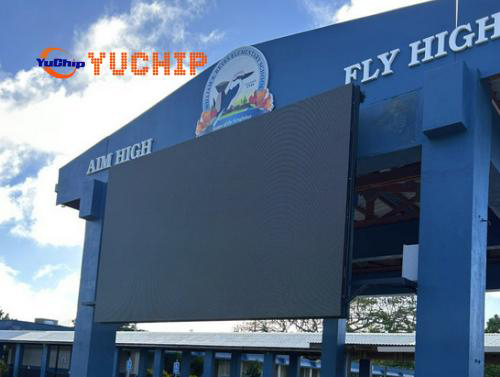
4.Maintenance Access
Outdoor LED displays can be maintained from the front, back, or both. Pole-mounted or wall-fixed screens may require front-access modules. Choose a model that suits your installation method.
5.Energy Efficiency & Power Consumption
- Power efficiency becomes critical for large displays:
- Choose Common Cathode LED design to reduce power waste.
- Select cabinets with PWM driver ICs for stable low-brightness performance.
YUCHIP Advantage: Our screens are optimized with power-saving ICs and stable 3840Hz–7680Hz refresh options.
6.Smart Monitoring & Control
For operators managing screens remotely, look for:
- Cloud-based CMS (Content Management Systems)
- Real-time monitoring of temperature, humidity, voltage
- Remote brightness and scheduling control
7.Weather Resistance & Safety Compliance
- Waterproof Ratings: Choose IP65 front and back, minimum.
- Wind Load Test: Especially crucial for rooftop or pole-mounted screens.
- Lightning & Surge Protection: Built-in components and grounding required.
YUCHIP’s Eco Pro Series offers lightning protection, IP65 sealing, and certified weatherproofing.
8.Real-World Case Studies
- France P6.25 Eco Project: Fixed screen on highway with rear maintenance, 6500 nits brightness.
- Grogria outdoor LED Billboard: 3D visual effect using curved cabinets, aluminum housing, anti-rust treatment.
- Saudi Arabia Custom Installation: Passive cooling, no A/C, extreme heat tolerance.
9.Choosing the Right Manufacturer Matters
Why work with experienced manufacturers like YUCHIP:
- Over 20 years of manufacturing outdoor LED displays.
- Full customization: from screen design to mounting structure.
- Export to 105+ countries with complete pre-sale and after-sale support.
Trends in Outdoor LED Display Technology
- 3D Naked-Eye Billboards: Seamless 90-degree corner screens and curved displays are now used to create eye-catching 3D visuals.
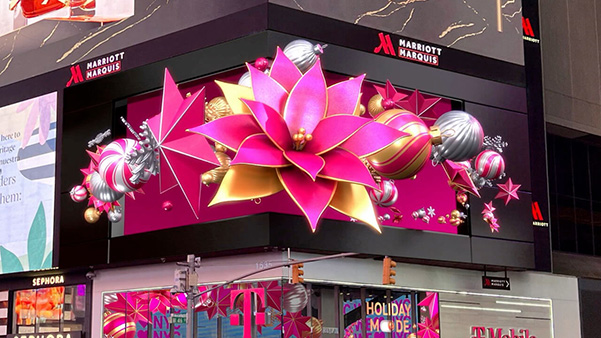
- Smart Control Systems: Integration with software platforms that support AI-based scheduling, remote diagnostics, and content triggering.
- HDR Support: High Dynamic Range delivers better contrast and lifelike colors.
- Ultra-light, Slim Cabinets: Newer cabinet designs reduce weight and depth while improving ease of installation.
How YUCHIP Delivers Tailored Outdoor LED Display Screen Solutions
As a leading manufacturer with over 20 years of experience, YUCHIP provides full-range outdoor LED screen solutions for various industries and environments. Our outdoor LED displays include:
- Eco Series: IP65, rear maintenance, ideal for billboard use
- Eco Pro Series: Front and rear maintenance, ultra-slim design, great for 3D and curved installations
- PeriPro Series: Adaptable for perimeter advertising in stadiums
Every product line is designed to balance durability, flexibility, and ease of use—with global project experience in the USA, France, UAE, Fiji, and more.
Conclusion: Plan for Performance, Not Just Price
Choosing the right outdoor advertising screen goes beyond pixel pitch and price tags. You must factor in climate, maintenance access, installation method, and power efficiency. By planning correctly, you’ll get a reliable, long-lasting solution that delivers high ROI and continuous performance.
Ready to Start Your Project?
Visit www.yuchip-led.com or email us at [email protected] for free consultation and expert guidance tailored to your location and installation needs.
Frequently Asked Questions About Outdoor LED Displays
- What is an outdoor LED display and how does it work?
An outdoor LED display is a large screen made of light-emitting diodes (LEDs) designed to show dynamic content in outdoor environments. It works by illuminating red, green, and blue LEDs to form images, videos, or text. These displays use high-brightness LEDs and weatherproof cabinets to ensure visibility and performance in direct sunlight and harsh weather.
- How bright should a digital billboard be for sunlight visibility?
A digital billboard should have a brightness level of at least 5,000 to 8,000 nits for clear visibility in sunlight. This ensures your outdoor content remains vivid and readable even in bright daylight, making it ideal for high-traffic roadside or open-area installations.
- What’s the best pixel pitch for outdoor LED advertising screens?
The best pixel pitch for outdoor LED advertising screens typically ranges from P3.91 to P10, depending on the viewing distance. For closer audiences, a finer pitch like P3.91 or P4.81 is ideal, while P6 to P10 suits long-distance viewing such as highways or stadiums.
- How long do weatherproof LED displays last outdoors?
A weatherproof LED display can last 50,000 to 100,000 hours of use, which equals 5 to 10 years in outdoor conditions. The lifespan depends on factors like build quality, environmental exposure, and regular maintenance.
- What are the benefits of using LED video walls outdoors?
Outdoor LED video walls offer high brightness, wide viewing angles, energy efficiency, and long-term durability. They’re perfect for advertising, live events, and public information displays, delivering impactful visuals day and night.
- Are outdoor LED billboards energy efficient?
Yes, modern outdoor LED billboards are highly energy efficient. They use advanced power-saving technology, automatic brightness adjustment, and efficient LED chips that consume significantly less electricity compared to traditional display options.
- How do you maintain outdoor advertising LED screens?
To maintain an outdoor advertising screen, regularly clean the surface, check for water ingress, inspect modules and cables, and update software. Many screens support front and rear maintenance, which makes it easier to access internal components.
- Can outdoor LED signage withstand extreme weather?
Yes, high-quality outdoor LED signage is built to be weatherproof with IP65 or higher protection, allowing it to withstand rain, snow, heat, and cold. Features like sealed modules and anti-corrosion materials enhance durability in extreme climates.
- What are the common installation methods for LED screens outdoors?
Outdoor LED screens can be installed using several methods: wall-mounted, pole-mounted, ground-supported, roof-mounted, or hanging structures. The best method depends on the site, viewing height, and screen size.
- Which pixel pitch should I choose for roadside LED displays?
For roadside LED displays, choose a pixel pitch between P6 and P10, as these offer excellent visibility from long distances. This ensures drivers and pedestrians can view content clearly while passing by.
- How do smart control systems work for outdoor LED displays?
Smart LED screens use control systems that allow remote content updates, real-time monitoring, and brightness adjustment based on ambient light. These systems increase efficiency and reduce operational costs for outdoor LED displays.
- Do I need front or rear maintenance for fixed LED billboards?
Fixed LED billboards may support front maintenance, rear maintenance, or both. Front maintenance is ideal for wall-mounted installations with limited access, while rear maintenance suits larger, freestanding structures with space behind.
- How to select the best outdoor LED screen for hot or cold climates?
When selecting an LED screen for hot or cold climates, look for models with wide operating temperature ranges, IP65+ protection, sealed modules, and anti-rust cabinets. This ensures stable performance in extreme heat, humidity, or frost.
- What’s the difference between outdoor and indoor LED screens?
Outdoor LED screens have higher brightness, weatherproof designs, and larger pixel pitches, while indoor LED screens feature finer resolutions, lower brightness, and sleeker cabinets for indoor environments. Each is built to match its operating conditions.
- How to choose a reliable outdoor LED screen manufacturer?
To choose a reliable outdoor LED screen manufacturer, consider their experience, product certifications, global project references, after-sales support, and customization capability. Look for proven quality and competitive pricing for long-term success.







